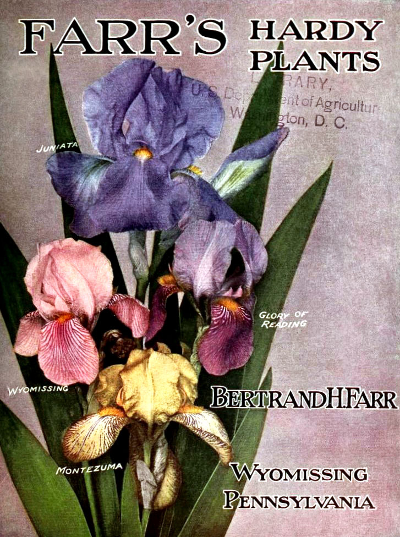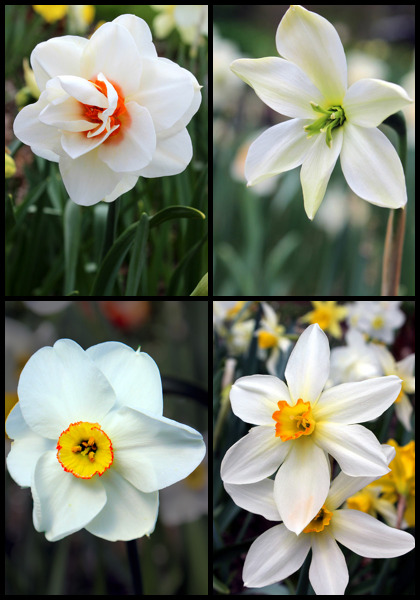To read more by topic or date, see our Newsletter Archives page.
“Nature’s first green is gold, / Her hardest hue to hold. / Her early leaf’s a flower; / But only so an hour....”
– Robert Frost, American poet, 1874-1963, in “Nothing Gold Can Stay,” 1923
We’re enjoying a warm spell here in Ann Arbor right now, and the bees are happily feasting on our winter aconites and snowdrops. But lows in the 20s will be back soon, and we’ve learned from long experience that shipping before the end of March is just too risky for our cold-tender bulbs. If we can, we will, but right now we plan to start Monday, March 30 – and we appreciate your patience!
As always, bulbs are reserved on a first-come first-served basis, and we’ll ship to our customers in the warmest zones first.
We can hardly wait, and we bet you’re just as eager. To spring and beyond!
Back to the top.

Just in case you missed the news, one of our most spectacular heirlooms is available once again. With its graceful, dangling sprays of deep rose, bell-like flowers, ‘Ehemanii’ is unlike any other canna, and absolutely gorgeous. In fact, I like it so much that I plant a whole row of it across the back of my own garden every year.
Three rare and wonderful dahlias are now available again, too:
‘Prinses de Suede’ – misty coral tipped with silver, last offered in 2016;
‘Arab Queen’ – swirling apricot, yellow, pink, and orange, last offered in 2015;
‘Mrs. H. Brown’ – like tiny flames, anemone-flowered and bee-friendly.
And finally there’s a dahlia we’ve never offered before, ‘Glorie van Noordwijk’, a summery, pastel beauty that’s named for Holland’s “seaside floral resort.”
Shipping starts soon, and these treasures won’t last long – so get ’em while you can!
Back to the top.

If you enjoy paging through the latest garden catalogs and daydreaming about all the plants you’d like to add to your garden, how about trying it with catalogs that are 50, 100, or even 200 years old?
Thanks to several dedicated members of the Historic Iris Preservation Society, catalogs in the HIPS archives are being scanned and posted online along with others from the Biodiversity Heritage Library.
The oldest catalog in the Hager-DuBose Memorial Library is the 1807 list of the pioneering American botanists John and William Bartram. Although irises are only a small part of its offerings, it includes several North American native iris as well as “exotic” varieties such as Florentina and Germanica. (Although we won’t offer these two again until next year, 11 other fabulous old iris are available now for delivery next month.)
The library’s oldest iris-only catalog is the 1915 catalog of Dean Iris Gardens and it also includes several of the earliest catalogs of Bertrand Farr such as the one from 1910 pictured here. Farr was America’s first important iris breeder and the person who did more than anyone else to popularize iris (and daylilies) in the US.
Scores of other iris catalogs follow, all organized by date, and many are richly illustrated. It’s a garden-daydreamers paradise. Enjoy!
Back to the top.

Here are three simple tips for right now that will help make your daffodils even more beautiful next year.
Writing in Maine’s Camden Herald, our good customer Lynette Walther says first of all plant more daffodils -- but where, and how do you remember those spots at planting time months from now?
“Cut some weatherproof markers from plastic yogurt containers or something that can be used to mark the bald spots where a clump of daffodils would look great next spring,” she advises. “Insert a marker in each sunny, well-drained spot, deep enough so that it will remain there all summer. Come fall when you’ve cleaned out the flower bed or border or wherever your markers lie, that is where you will rediscover them,” and you’ll know exactly where to plant your bulbs.
Then in a tip she calls her “crabby comment of the week,” Lynette says “Yes, everyone knows that after they are finished blooming, the daffodil foliage that is left behind looks rather icky. But don’t cut it off, and for the love of all things good, don’t be tempted to braid or twist or whatever it is you are compelled to do in an attempt to tidy it up. You won’t be fooling anyone. Just leave it alone! That tatty foliage is performing an important job that involves photosynthesis, and is in effect working to store enough energy in that bulb down below to enable it to bloom again next spring. So, hands off!”
Finally, Lynette writes, “Looking for some tried and true bulb selections? Visit the Old House Gardens website for a selection of trusted daffodil varieties.”
Good advice all around, we’d say!
Back to the top.
Please help us “Save the Bulbs!” by forwarding our newsletter to a kindred spirit, garden, museum, or group.
Simply credit www.oldhousegardens.com.














